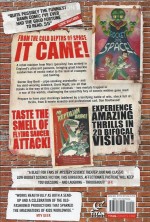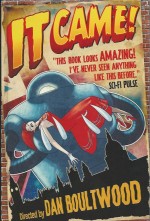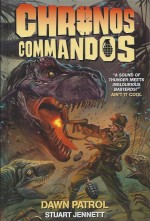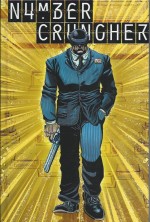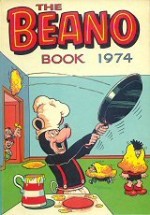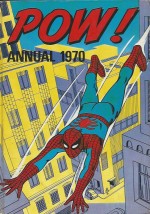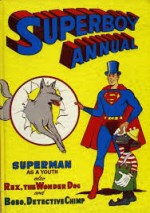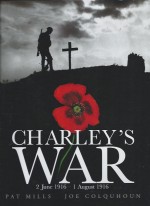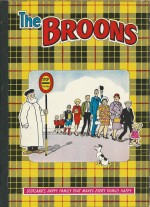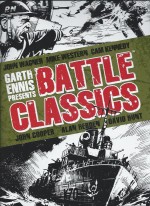
By John Wagner, Alan Hebden, David Hunt, Mike Western, John Cooper, Cam Kennedy & various (Titan Books)
ISBN: 978-1-78116-741-0
In case you don’t know: apart from his other scripting wonders, Garth Ennis is the best writer of war comics in America today. In fact, if you disregard the marvellous Commando Picture Library series published by DC Thomson (which you shouldn’t – but no one admits to reading them in my circle), he may well be the only full-time comics professional regularly working in the genre in the entire English Language.
His credentials are well established now and, despite his self-deprecating tone in his Foreword, Ennis’s affinity for and love of combat tales makes him the go-to guy if you’re planning to re-publish classic war stories and even more so if they all come from his favourite boyhood read…
For most of the industry’s history, British comics have been renowned for the ability to tell a big story in satisfying little instalments and this, coupled with superior creators and the anthology nature of our publications, has ensured that hundreds of memorable characters and series have seared themselves into the little boy’s psyche inside most British adult males.
One of the last great weekly anthology comics was Battle, a strictly combat-themed anthology which began as Battle Picture Weekly (launched 8th March 1975) which, through absorption, merger and re-branding (as Battle Picture Weekly & Valiant, Battle Action, Battle, Battle Action Force and Battle Storm Force) reigned supreme in Blighty before itself being combined with Eagle on January 23rd 1988. Through 673 blood-soaked, testosterone-drenched issues, it fought its way into the bloodthirsty hearts of a generation, consequently producing some of the best and most influential war stories ever.
Happily some of the very best – notably Charley’s War, Darkie’s Mob and Johnny Red – have recently been preserved and revisited in sturdily resilient reprint collections, ably supplemented by a taster tome entitled The Best of Battle, but there’s still loads of superb stuff to be found …
This particular compendium gathers in two of the very best in their entirety and provides a triple dose of short, sharp shockers illustrated by doyen of war artists Cam Kennedy.
In his introductory essay ‘And you expected to die hard: HMS Nightshade‘, Ennis fills in the background on the strip which disproved the publishing maxim that kids didn’t want to read “ship storiesâ€: detailing how and when the feature began (like Charley’s War in Battle #200, dated January 6th 1979 for 48 instalments) and just why it was so special…
The simple answer is sheer talent: scripter John Wagner (Bella at the Bar, One-Eyed Jack, Joe Two Beans, Judge Dredd, Strontium Dog, Fight for the Falklands, Button-Man, Batman, A History of Violence etc.) and illustrator Mike Western (The Leopard of Lime Street, Jack o’ Justice, The Wild Wonders, The Sarge and so many more) had worked together on other strips such as Partridge’s Patch and the aforementioned Darkie’s Mob, but here especially their talents synchronised and merged to form a minor classic of grit, determination and courage under fire and despite stupidity and cupidity.
Set in an almost forgotten maritime arena, HMS Nightshade shares the stories of Seaman George Dunn as told to his grandson: grim and glorious events of the Second World War as seen from the rolling decks of a British Flower-Class Corvette.
Escorting the merchant ships and tanker convoys that kept Britain on her feet during the Battle of the Atlantic or constantly re-supplying war materiel to Russia on the Murmansk Run proved to be days of back-breaking toil and unending tedium punctuated by moments of insane amusement or terror-filled tension and sudden death, but the old salt slowly and engagingly reveals how bonds forged between shipmates and the vessel which protected them remain strong – even though old George is the last survivor of those perilous days…
With occasional art assistance from Ron Tiner, the saga begins with young George and his new shipmates Big Stan, Smiffy and Jock McCall joining the relatively tiny vessel in May 1940.
Forced to adapt quickly to life aboard ship, the quartet are just in time to become part of the vast flotilla rescuing British soldiers from Dunkirk, experiencing first-hand and up close all the horrors of war and shocks of personal loss.
Learning to despise the ever-present, merciless U-Boats and perpetual airborne attacks from Stukas and other predatory planes, the Nightshade’s crew soon become adept at spotting and shooting back, but escort duty still consists mostly of barely suppressed panic and the appalling anger and pain as one more tanker or cargo ship under their protection explodes and sinks…
Wagner’s stunning ability to delineate character through intense action and staccato humour carried the series from the North Atlantic, through an astounding sequence in Russia, to Africa: blending sea battles with evocative human adventures – such as an imbecilic merchant sea captain, Smiffy’s tragic marriage and brush with Black Marketeers or George’s vendetta with psychotic bullying shipmate Parsons. That villain’s ultimate fate was one of the most unforgettable scenes in British comics history…
The saga abounds with sharply defined and uniquely memorable supporting stars such as Handsome John, tragic Dennis Flowers and despondent “Never-gonna-make-it†Brown – who was so obsessed with his impending demise that every man aboard carried one of his goodbye letters to his mum. Even Dogfish: a half-drowned mongrel saved from drowning whose canine senses proved invaluable in early warning of German air raids became a beloved canine star – which meant nothing to a writer like Wagner who knows how to use sentiment to his advantage…
Constant attacks led to a high turnover and later replacements included Whitey Bascombe who barely survived an immersion in Arctic waters and never felt warm ever again, affable coward and inevitable absconder Tubby Grover and simpleminded body builder “Muscles†Thomson – who took his repugnant role of “Ship’s Crusher†to his heart…
Packed with intense combat action, bleak introspection, oppressive tension and stunning moments of gallows hilarity, the life and inescapable death of HMS Nightshade is a masterpiece of maritime fiction and war comics, and alone would be worth the price of admission here.
Even so, there are a few more dark delights to tickle the military palate, and the next inclusion offers a view of the conflict through an enemy’s eyes…
As explained by Ennis in ‘Rest Easy, Herr Margen: The General Dies at Dawn‘ is a short yet provocative serial dealing with the concept of “the Good Germanâ€, cleverly delivered here as a deathbed confession by a disgraced Wehrmacht officer awaiting execution at Nuremberg.
Scripted by Alan Hebden (Rat Pack, Fighting Mann, M.A.C.H. 1, Meltdown Man, Major Eazy etc) with art by John Cooper (Thunderbirds, Judge Dredd, Dredger, Armitage, One-Eyed Jack, Johnny Red, Dr. Who and so much more) this brief – 11 episodes from October 4th to December 28th 1978 – thriller traces the meteoric career of professional soldier Otto Von Margen.
Found guilty of Cowardice, Disobedience, High Treason and Defeatism by his fellow generals, he sits in a cell at Stadiheim Military Prison near Nuremburg, on the 20th of April 1945, counting down the 11 hours to his execution by telling his side of the story to his jailer.
Beyond the walls, the surging US army is drawing ever closer…
From early triumphs in Poland to the invasion of Norway, from Dunkirk to Yugoslavia, the Siege of Stalingrad and eventually Normandy – where his constant opposition to the monstrous acts of his own side finally became unpardonable – Von Margen and his devoted comrade Feldwebel Korder proved themselves brilliant, valiant and honourable soldiers.
However their incessant interference in Gestapo affairs and SS battlefield atrocities made them marked men, and finally the General went too far…
The tale of a patriotic soldier who served his country ruthlessly and proudly as a tank commander, whilst conducting a private war against barbaric Nazi sadists of the Gestapo and SS, is both gripping and genuinely moving, and the glittering, dwindling hope of the Americans arriving before his execution keeps the suspense at an intoxicating level…
This epic oversized monochrome collection (256 pages and 312mm x 226mm) then concludes with three complete short stories all illustrated by the magnificent Cam Kennedy (Commando, Fighting Mann, Judge Dredd, Rogue Trooper, Batman, Star Wars, The Light and Darkness War, The Punisher, Zancudo).
Sadly, as explained by Ennis in his prelude ‘Get out, Leave me alone! This is my grave!: Private Loser and other stories’, only the last – and by far best – has a writer credit.
‘Clash by Night!’ is a classic “irony†tale as a group of US Marines on Iwo Jima fall foul of the Japanese trick of imitating wounded American soldiers, whilst the equally anonymous ‘Hot Wheels’ wryly describes the do-or-die antics of flamboyant supply truckers Yancy and Mule as they break all the rules to get a shipment of food and ammo to hard-pressed American troops closing in on Berlin in 1945…
There’s a subtle knack and true art to crafting perfect short stories, and Battle‘s veteran editor Dave Hunt shows how it should be done in the impressively gripping ‘Private Loser’ wherein a meek, hopeless failure left to die during a British retreat from Burma in 1942 finally finds a horrific, gore-soaked, existentialist moment where he matters…
Ennis’ Afterword then wraps everything up with appropriate Thank-Yous and some very handy information on where to find even more masterful martial comics madness to enthral and delight anyone whose appetite for torment, tragedy, blood and wonder hasn’t been fully slaked yet…
These spectacular tales of action, tension and drama, with heaping helpings of sardonic grim wit from both sides of World War II and beyond, has only improved in the years since Battle folded, and these black and white gems are as affecting and engrossing now as they’ve ever been.
Fair warning though: this stuff is astoundingly addictive but with no sequel scheduled you might feel compelled to campaign for a second volume…
© 2013 Egmont UK Ltd. All rights reserved.
Garth Ennis Presents Battle Classics is scheduled for release January 9th 2014.
